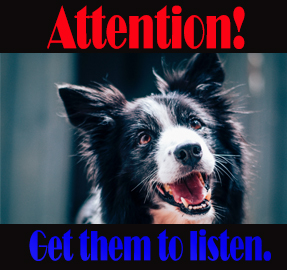Ever felt like the person you are talking to is not listening, has a hidden agenda or has already made up their mind? It is so frustrating. Why even bother voicing your opinion? Well, if you feel that way when you are talking one on one, when you are in a large group, the same hold true.
A skilled facilitator is an exceptional listener who not only practices active listening, but goes beyond that to engaged listening. Let’s start by defining active listening. When one is using active listening, he/she is paying attention to what the other person is saying in order to try to understand what is being said in order to understand the views and feelings of the other person. When active listening, it is important not to try to finish the other person’s sentences or thoughts or to jump ahead to the next question or to summarize the conversation too quickly.
Engaged listening goes beyond active listening. When one is engaged, there is a mindfulness and presence that goes along with the active communication. The engaged communicator has a mind set of being present and putting their complete attention into the conversation with the intent to understand the person completely, the issues, the opportunities, the concerns, feelings, and more. Like a sports team where the outcome depends on each person’s contribution, the end result of the conversation relies on everyone’s engagement in the conversation. The engaged listener is vested in the outcome. It is the mindfulness and presence in the conversation that allows the engaged listener to hear between the lines to understand not only what is being said, but also to go beyond what is spoken to uncover what truly is needed and most important.
The engaged listener’s ever present mindfulness allows them to gain insight into the truth hidden between the lines and to uncover the elephants in the room. Then skillfully leads the team to have deep discussions that help them move forward successfully.
Dr. Karina
As a facilitator, developing the engaged listening skills is critical. In a large group setting, there are large groups of people talking. This makes engaged listening ever more important. When groups of people are having multiple conversations at multiple tables the facilitator has to remain ever present and ever engaged in order to keep everyone on task. The engaged listening skills are one of the best tools the facilitator has to do this.
When fully present, the facilitator is quickly able to recognize when conversations at tables start to get critical or when a few people tend to be monopolizing the conversation. The facilitator is then able to intervene to help rebalance or refocus the group as necessary. By modeling the engaged listening skills, the facilitator is also helping set the tone and expectations for conversations.
The engaged listening skills also help the facilitator know when it is time to move on to the next activity or when to take a shift or break. It allows the facilitator to keep pulse on all the conversations and how the different teams are working. Sometimes, to keep the conversations going, it will be necessary to do an unplanned activity, energizer break or interactive activity that might result in reorganizing the table participants. This is an excellent way to regain control of the group and to reenergize it.
The engaged listener has a flow about them that allows them to quickly move in the direction the group needs to go to continue to be productive. This flow is possible because the facilitator does not have a strict agenda. Certainly, there are goals to be accomplished during the meeting, but the specific outcome is drive by the group as a whole without any hidden agendas. The engaged listening skills allow the facilitator to drive the team forward in the direction of the final result without specifying what that result must me.
At the end of the session, the results are achieved because the team came to those results with the help of a facilitator who at times might have posed questions or summarized discussions based on reading between the lines and even asking the group to consider talking about the elephant in the room. This is possible because the engaged listener demonstrated through actions his/her engagement and built confidence and trust with the group. This allowed the facilitator to lead the group successfully.

